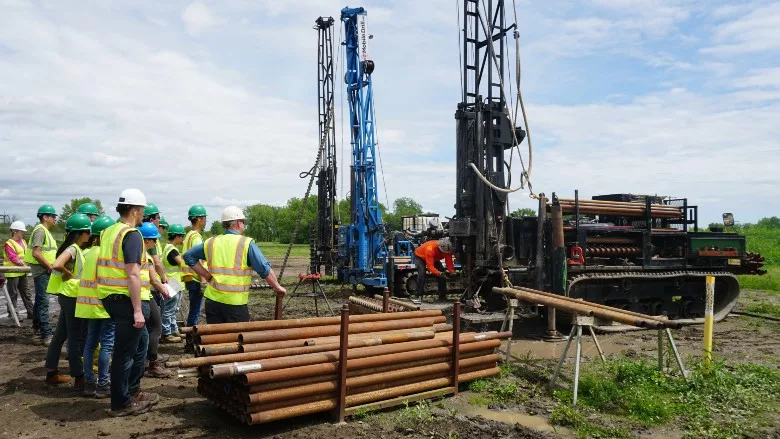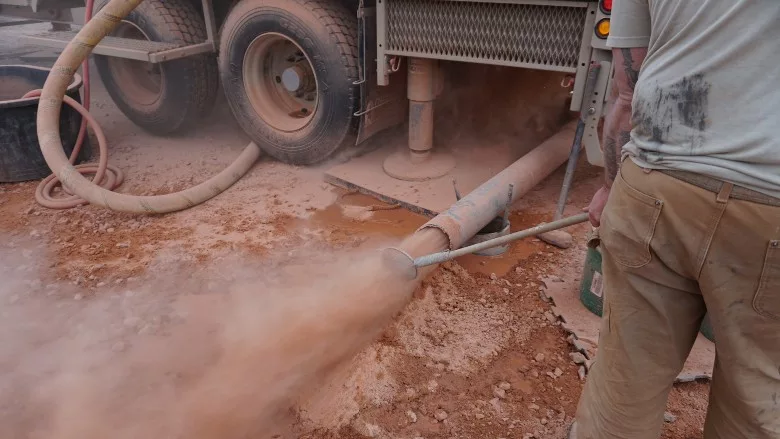Hiring into, Working in and Selling a Modern Drilling Industry
Newer Generations Insist on Blending Soft, Hard Skills

Newer generations process information in a different way than the Baby Boomers. It can make a big difference in everything from hiring to sales.
Source: Brock Yordy

Drillers have historically learned the trade in a “hard skills” way. Newer generations have an approach more blended between hard skills and soft skills.
Source: Brock Yordy
The foundation of any lasting business is people. In kindergarten, we learn the golden rule: Treat others the way you want to be treated. However, for many in the construction industry, that golden rule starts to tarnish as we move from new hire to experienced veteran.
First, we say, “This generation is too soft for hard work.” Next, we blame our no-holds-barred “blunt honesty” on decades of reality TV. Today, we chalk up acting callous to the anonymity of texting or the internet. Regardless of the ultimate source, kindness isn’t a top priority for many professionals today. It seems complicated to maintain the bright shine of the golden rule.
In the past few years, I have heard several leaders in drilling and construction say, “We all need to work on our soft skills,” or “He just needs to use his soft skills more.” What about this one?: “When you drill, it’s hard to switch from drilling focus to softer communication with helpers.” The truth is, we must be good humans or people will find another human to work with (or purchase services from). We can all do a better job of understanding each other.
The first time I heard the term “soft skills,” I left the meeting with the phrase scribbled in my notes. Next to it, I wrote, “Oh great, another new corporate buzzword.” I didn’t want to be left in the dark, so I immediately searched the term on my laptop. I learned that Paul G. Whitmore and John P. Fry coined the term while studying troop leadership for the U.S Army and it took on wide use there by the early ’70s. The basis for their study was that the Army excelled over the years at training men in “hard skills,” or tasks acquired through practice, repetition and field experience. Hard skills included operation of machines (like tanks and other large vehicles) and complex tasks (firearm handling, hand-to-hand combat). However, the Army was not good at training “soft skills” such as leadership, critical thinking and persuasion. Whitmore and Fry sought out leaders in the Army at the time who had exceptional soft skills. They tapped that collective knowledge to better train the next generation.
I see a huge correlation between what the Army studied 50 years ago and today’s drilling industry. We both put a significant emphasis on task training to execute effectively using specialized equipment. That concept makes sense; our equipment often costs hundreds of thousands of dollars. Good training programs increase our chances of both success and preventing catastrophic failure. We also both recognize that, even with the best equipment and operator, lapses in leadership, critical thinking and communication can always impact victory.
At the time of the Whitmore and Fry study, we had the Vietnam War and the Baby Boomers were the new generation being trained. It challenged the Army’s leadership culture and training. They needed to develop better skills to motivate and inspire this new generation. What had worked in previous campaigns stopped working. Fun fact: Gen. Dwight Eisenhower in 1943 contacted then Lt. Gen. George S. Patton during the invasion of Sicily to instruct him to stop slapping soldiers. After the war, history revealed that these soldiers had “shell shock” or battle fatigue, which many in Patton’s generation believed impossible. The oldest generation has always had a hard time understanding the newest generation.
The problem with the terms soft skills and hard skills in the 21st century is that the new hires and new consumers have again changed. We can’t slap them back into the old ways. Technology has shifted hard skills from operating complex machinery to creating complex programs. For the new generation, these skills blend. They no longer view one as having higher priority. This difference often means we as an industry have a hard time working, communicating and selling to newer generations. Instead, we attempt to utilize a 20th-century training and thought process to solve a 21st-century problem. Sure, just like a 1970s table-drive can be successful on some holes, this process will work for some people. But, as with Whitmore and Fry’s 1970s study, I think we need to dig deeper into the newest generation working with us and purchasing from us.
Beyond their blended skills, many of the youngest millennials and oldest generation Zs never experienced what we consider hard skills in primary school. Often, in budget cuts, schools across the country turned to shop classes first.
The youngest millennials and oldest generation Zs grew up on these blended skills from the first day of school. Take the concept of Common Core math. We can joke about the program’s design and its intention to create confusion among older generations. But the Common Core approach uses a behavioral psychology method to develop critical thinkers who can view problems and solutions in multiple ways. In drilling, having more than one option to solve an issue increases the possibility for success. Those same skills create a consumer base that wants to understand the entire process and wants more than one option. They ask questions and use the answers to adopt the best option or technology. For them, an answer is always just an internet search away. These newer generations excel at being early adopters when compared to earlier generations.
Beyond their blended skills, many of the youngest millennials and oldest generation Zs never experienced what we consider hard skills in primary school. Often, in budget cuts, schools across the country turned to shop classes first — creating a loss in knowledge. The utilization of hand tools for complex tasks has slowly diminished over the last two decades in schools. New hires and new consumers often ask questions that seem to have simple answers. This is why. It is why trade school attendance has also slowed. When these cohorts think about continuing to utilize blended skills, they consider academic college their only path.
What do we do once we understand this perspective change in our new hires and new consumers? Start with a culture change, rather than just saying, “I need to work on my soft skills.” Regardless of when you attended kindergarten, the one thing that hasn’t changed is the golden rule. Perhaps when we hear a colleague make a statement like that, we could say, “How about we work on our human skills.” Next, we can trust that these new hires and customers will process and accept information digitally, and then question that information critically. That trust allows the older generation to pass on more knowledge and for the new generation to train and get informed faster. Finally, we should capitalize on the opportunity to have a new generation adopt new technology and try new things. That kind of initiative helps a company develop, grow and increase profitability.
Get more business tips for drilling contractors
It seems too simple: If we want to hire and inspire a new generation, we must provide a kinder, more understanding culture. Still skeptical? Consider how we, as an industry lost most of the millennial generation as new hires. Many companies have closed due to not understanding how to sell to millennial customers. In January, I called 2022 the “year of the employee.” I want to alter my January statement for the starting second quarter: 2022 is the year for the early adopters.
Looking for a reprint of this article?
From high-res PDFs to custom plaques, order your copy today!





